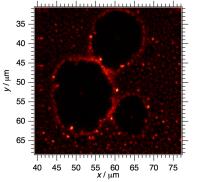Accurate and efficient band gap predictions of metal halide perovskites using the DFT-1/2 method: GW accuracy with DFT expense
Scientific Reports, 7 (1):
14386-- (2017)DOI: 10.1038/s41598-017-14435-4
Abstract
The outstanding optoelectronics and photovoltaic properties of metal halide perovskites, including high carrier motilities, low carrier recombination rates, and the tunable spectral absorption range are attributed to the unique electronic properties of these materials. While DFT provides reliable structures and stabilities of perovskites, it performs poorly in electronic structure prediction. The relativistic GW approximation has been demonstrated to be able to capture electronic structure accurately, but at an extremely high computational cost. Here we report efficient and accurate band gap calculations of halide metal perovskites by using the approximate quasiparticle DFT-1/2 method. Using AMX3 (A = CH3NH3, CH2NHCH2, Cs; M = Pb, Sn, X = I, Br, Cl) as demonstration, the influence of the crystal structure (cubic, tetragonal or orthorhombic), variation of ions (different A, M and X) and relativistic effects on the electronic structure are systematically studied and compared with experimental results. Our results show that the DFT-1/2 method yields accurate band gaps with the precision of the GW method with no more computational cost than standard DFT. This opens the possibility of accurate electronic structure prediction of sophisticated halide perovskite structures and new materials design for lead-free materials.
